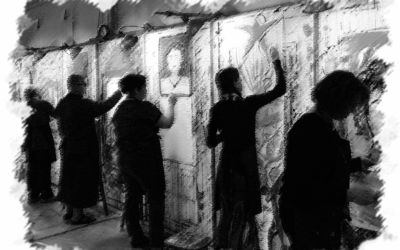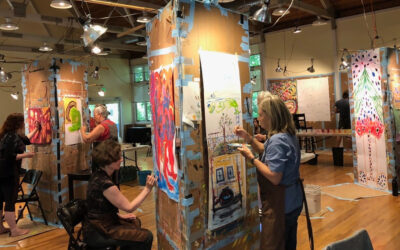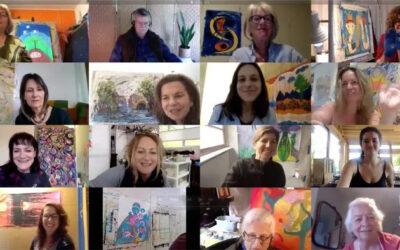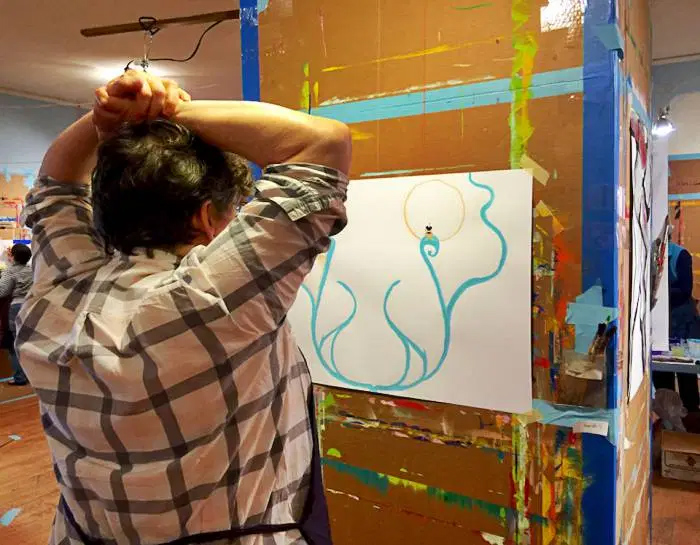
“Self-compassion entails being warm and understanding toward ourselves when we suffer, fail, or feel inadequate, rather than ignoring our pain or flagellating ourselves with self-criticism.” ~ Kristin Neff
In the first part of this series on self-compassion and process painting, we explored how staying present and compassionate toward ourselves can free us to more fully express our unique creative wisdom. In the second part, we looked at five specific ways that self-compassion can support a painting practice.
In this final installment on self-compassion and creative expression, I’ll talk you through ways to practice self-compassion. I’ll also offer some resources from authors and researchers who are champions in this general arena so you can take your practice further
One of the most widely recognized self-compassion researchers and teachers, Dr. Kristin Neff, names three components of self-compassion practice: mindfulness, common humanity, and self-kindness.
Mindfulness. If you already have some sort of mindfulness practice, you’re one-third of the way to greater self-compassion. If not, don’t worry; there are many avenues for learning mindfulness skills. In a nutshell, mindfulness is simply a specific kind of noticing, without judgement, decision-making or commentary.
An article published by Greater Good at the University of California, Berkeley, does a thorough job of defining mindfulness, including the following key elements of mindfulness practice identified by Professor Jon Kabat-Zinn and others:
- Pay close attention to your breathing, especially when you’re feeling intense emotions.
- Notice—really notice—what you’re sensing in a given moment: the sights, sounds, and smells that ordinarily slip by without reaching your conscious awareness.
- Recognize that your thoughts and emotions are fleeting and do not define you. This insight can help to free you from negative thought patterns.
- Tune into your body’s physical sensations, from the water hitting your skin in the shower to the way your body rests in your office chair.
(For more, see What Is Mindfulness? on the Greater Good website.)
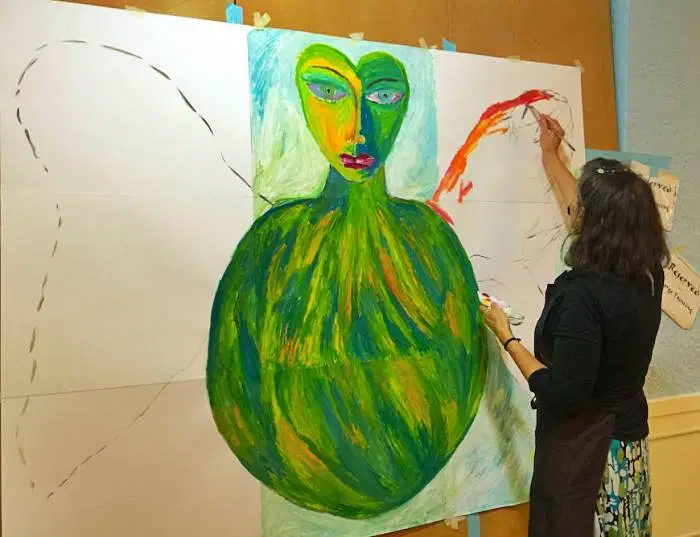
As you begin to get the hang of mindfulness, you can start to tune in to moments when you are experiencing difficulty. In process painting or other creative endeavors, this may happen when the inner critic is making loud comments in your ear:
- That’s so ugly.
- You don’t know how to paint an elephant.
- What are you doing here anyway, just wasting time, not being productive.
- Everybody else knows what they’re doing, I don’t belong here.
At times like these, Dr. Neff encourages us to practice self-compassion. You might begin by simply noticing that this is a moment of struggle. See how it feels to say something to yourself like:
- It’s painful to be feeling this.
- This hurts.
- I’m having a really hard time right now.
Common humanity. A second component of self-compassion practice is “common humanity.” In this moment of struggle, we remind ourselves that all human beings suffer. We’re not alone. You might find ways of saying this to yourself that resonate with you. Some examples include:
- Difficulty is part of life.
- Everyone feels this way sometimes.
- This is part of being human.
Self-kindness. The third component of self-compassion practice is self-kindness. Dr. Neff says, “Self-compassion entails being warm and understanding toward ourselves when we suffer, fail, or feel inadequate, rather than ignoring our pain or flagellating ourselves with self-criticism.” You may need to experiment with how best to tap into self-kindness for yourself. Some possible ways of talking kindly with yourself include:
- May I be kind to myself in this moment.
- May I hold my pain with tenderness.
- I’m worthy of receiving self-compassion.
- May I be gentle and understanding with myself.
- I will try to be as kind as possible with myself.
Finding what resonates with you will make all the difference in easing into this practice.
By diving into self-compassion practice, I hope you become even more energized and enlivened to paint for process. I also sincerely hope it helps you find even more freedom in being your own authentic, unique, creatively expressive self.
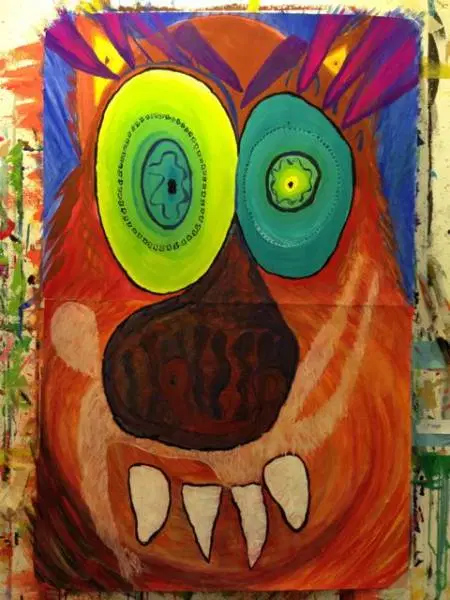
Learn More About Self-Compassion Practice
Kristin Neff’s website offers several other exercises to help you strengthen your self-compassion muscle.
In addition, many others teach about self-compassion and related areas of research:
Brene Brown, Ph.D., is a researcher, professor and author of many books on shame and shame resilience. You may want to begin with her two excellent TED talks:
In her book, The Gifts of Imperfection, Brown discusses ten guideposts for wholehearted living. One of these guideposts is Cultivating Self-Compassion: Letting go of Perfectionism.
Tara Brach, Ph.D., is a psychologist, meditation teacher and author. The theme of her first book, Radical Acceptance, is about practicing unconditional self-acceptance. She teaches a wonderful mindfulness practice, called RAIN, for working with difficulties.
Christopher Germer, Ph.D., is a colleague of Kristin Neff’s and author of The Mindful Path to Self Compassion. He has worked together with Kristin Neff to create a course titled Mindful Self Compassion. You can find more about the course and upcoming offerings on his website.
Learn More About Process Painting
To further explore this topic and more, listen and subscribe to Stewart’s series of monthly podcasts. You might begin with the episode Vulnerability.
To find out about opportunities to participate in The Painting Experience, see our Programs.
Molly Siddoway King is an affiliate with The Painting Experience. She’s a retired psychotherapist, teacher, and Outward Bound instructor. This December, she’ll be co-facilitating our 5-day process painting retreat at The Esalen Institute, along with Stewart Cubley and Anne Pechovnik.

